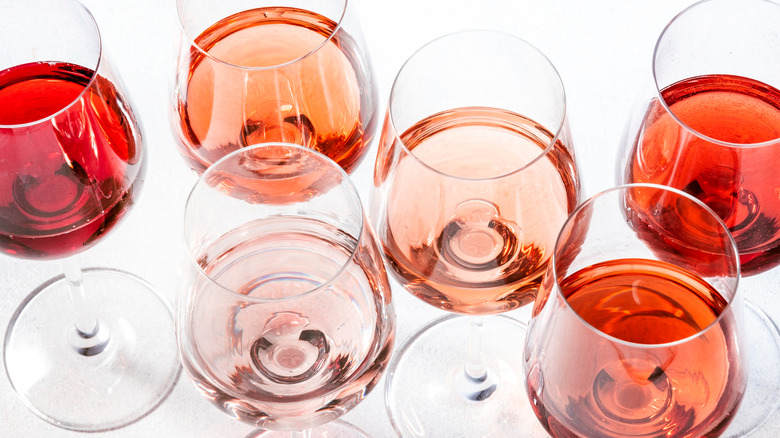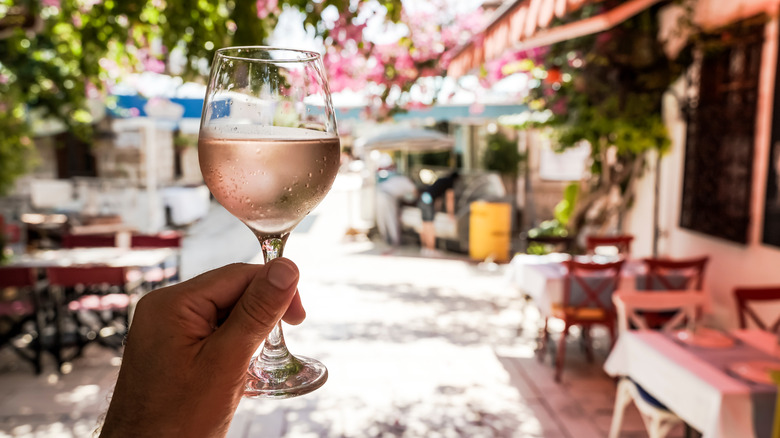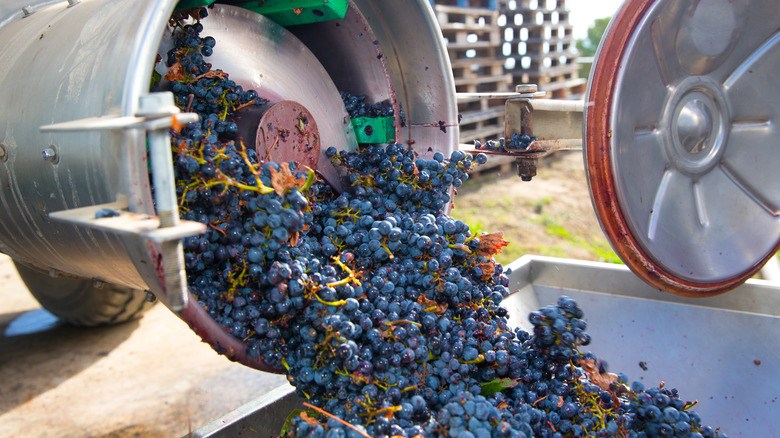What Makes White Zinfandel And Rosé Different?
White Zinfandel and rosé, two wines that may appear virtually identical, have contrasting reputations. In the late 1970s and 80s, White Zinfandel was the darling of the wine world, thanks to a fortuitous accident at Sutter Home, a Napa Valley wine giant. Between the sweet, easy-to-drink nature of the wine and its low price tag, White Zinfandel sold out time and time again — and still does!
As interest in wine culture increased, so has the quality, and more people started turning to less sweet, more "grown-up" wines, including dry rosés from places like Provence in France. These wines offer the refreshing qualities of white wine with the flavor characteristics of reds, and they pair well with food. Even though White Zinfandel is still one of the best-selling and popular wines in America, lots of wine drinkers turn their noses up at it, considering it inferior to almost every other type of wine on the market. The funny thing is, White Zins and rosés have more in common than people realize.
What is rosé wine?
First of all, contrary to popular belief, rosé wine isn't a mixture of red and white wines. This method exists, but it's pretty uncommon. Rosé is a totally separate category of wine made with the same care as reds and whites. Additionally, rosé is not a grape varietal but rather made from a variety of red grapes such as Pinot Noir, Grenache, Syrah, and Sangiovese, among others. When making rosé, the juice sits with the grape skins after crushing, but the skins are removed sooner than for red wines. This process creates both flavor structure and the wine's signature pinkish hue.
Generally, rosés produced in Europe (namely, France, Spain, and Italy) tend to be dryer, while those from non-European countries like the U.S. and Australia carry a bit more sweetness. However, even the sweetest rosé is typically not as sweet as a standard White Zinfandel. Rosés are an incredibly popular warm-weather wine as they pair well with summer foods like fresh fish and seafood, vegetables, chicken, and soft cheeses. They work well, too, with spicy foods and barbeque.
What is White Zinfandel?
White Zinfandel wine is made from red Zinfandel grapes, the same grapes used in making the bold, big Zins California wineries are known for. What many people don't know is that White Zinfandel is actually a type of rosé wine, made in the same way. The difference is that while rosés can be made with various grapes, White Zin is always made with Zinfandel grapes.
You may be wondering, then, why White Zinfandel is sweeter than other rosés. This is because much of the fruit's sugar is not converted into alcohol. In 1975 Sutter Home experienced an unintentional bout of stuck fermentation while making a batch of White Zinfandel. This happens when the yeast that's added to the grape juice dies before it turns all the sugar into alcohol, leaving a lot of sugar behind. Cutting their losses, they decided to bottle the wine anyway, and people loved the result. This is how White Zin got its sweet reputation, which some people love and others hate. Many modern winemakers are now making drier versions of White Zinfandel, modeled after the popular dry rosés.
Like rosé, White Zinfandel pairs well with a variety of foods. The sweeter versions go well with charcuterie boards and creamy pastas, while the drier versions are a good match for typical rosé pairings. Ultimately, it's important to drink wines you find enjoyable, regardless of their reputation.


